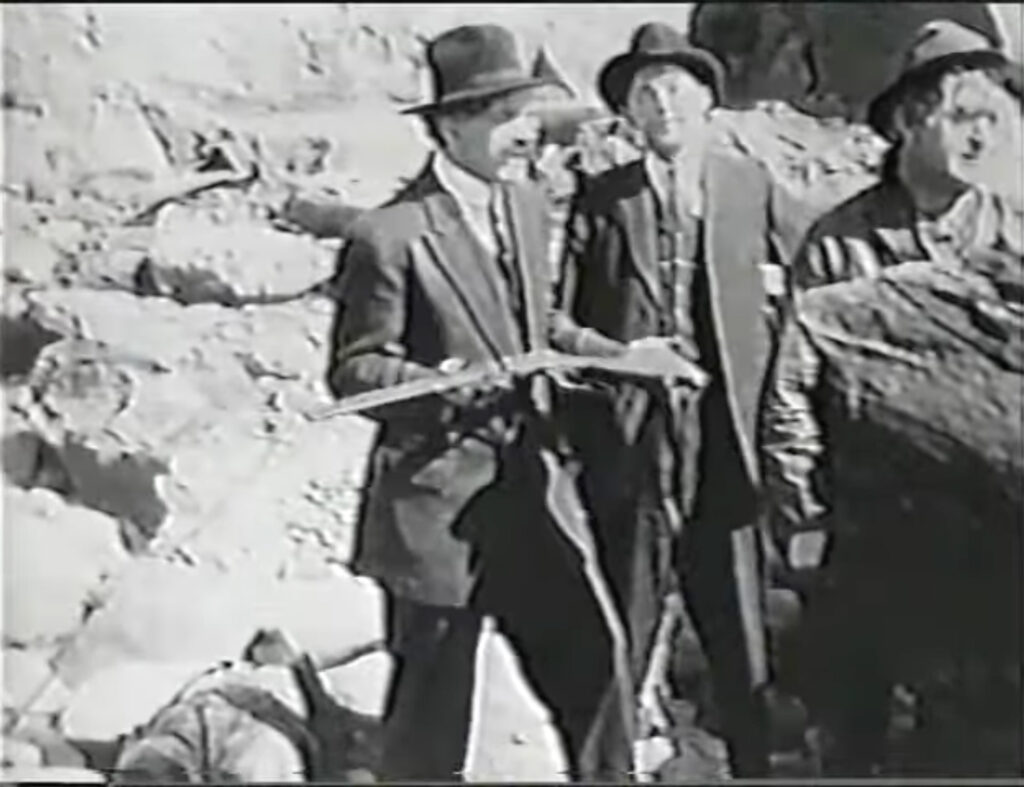The actual top film of 1914 was an epic 23-part serial called The Million Dollar Mystery, which it turns out is lost (how do you lose 46 reels of smash hit movie history, I find myself wondering?). So, I watched the second-highest-grossing film of that year instead.

TESS OF THE STORM COUNTRY, EDWIN S. PORTER, FAMOUS PLAYERS FILM COMPANY, 1914, 88 MINUTES.
You’ll definitely like Tess of the Storm Country, but only because of absolutely magnetic Mary Pickford – in feisty waif mode, right at the centre of it – owning the whole thing really. She’s surrounded in this cheesy melodrama by many big slabs of men, implausible blocks of motion picture timber – all tragically rendered exactly identical (apart from their hats) by Pickford’s brilliance.

They are either utterly unconvincing landless fishermen or slightly-more-convincing heartless landowners. The miserable, small-town capitalists involved live in the big house above the beach and resent the presence of the squatters below. The film was shot in Santa Monica and Del Mar, so this could literally be the house that Robert De Niro seemed so unattached to in Heat.

Of course, this big house is really a classic bourgeois pile, with a columned entrance and a carriage drive, indicating prosperity and respectability (surely demolished and replaced a dozen times since). It menacingly overlooks the strand where the fisherfolk’s makeshift camp cowers.

Doing the actual menacing, down there in the lower, realm close to the sea, are various thugs in heavy suits – they are gamekeepers – circulating authentically, armed and dangerous, on the beach and in the squatters’ camp. In the exalted upper section of the narrative swooning ladies in hats and some callow students are also present. The intermixing of these two realms becomes a plot point.
Tess of the Storm Country was directed by Edwin S Porter, a veteran who’d made his name with the extraordinary The Great Train Robbery. Pickford, who by this time was already essentially co-directing the films she was in, was unhappy with his old-fashioned ways. The Great Train Robbery was the absolute state of the art when it came out. But that was over ten years earlier and the haphazard, static, flat scene-making we see here was already very out-of-date.
The story is flat too, based on a best-selling news-stand romance by Grace Miller White. Pickford apparently disliked the crudity of this standard-issue morality tale – featuring the staples of the era’s melodramas: dignity in poverty, illegitimacy and extra-marital sex, love between classes, murder and a wrongly-convicted man. Hypocricy in authority also makes an appearance. She recognised a hit when she saw one, though, and signed on without further objection.

In movies of this period the wealthy could still be depicted as unproblematically wicked. These are not the ‘complicated’ villains of later eras, nor the conflicted plutocrats or tormented mobsters of post-depression or neoliberal America. These are simply capitalist thieves, exploiters of the vulnerable. In this film (as in others of the period) our principle villain, the head of the wealthy family at the top of cliffs, literally whips Pickford’s character Tessibel.

It’s wooden but sometimes it’s actually clumsy too. There’s an arresting scene where Pickford sics a (very old and gentle-looking) dog on one of her gentleman harassers. She sends the dog off out of the left-side of the frame and, bewilderingly, it arrives, barely slathering, at its victim’s location also out of the left-side of the frame. Pickford then sets off by the same filmically impossible route, arriving in time to steal her pursuer’s gun and depart, with the dog, out of the right-side of the frame.

The film was a massive hit, yielding many times its $10,000 budget. Pickford told a biographer it was “the beginning of my career.” She’d been making films for five or six years, including 75 for D.W. Griffith, so this is meaningful. It was one of the first movies to be made in the emerging Hollywood creative complex and the beaches are all Californian. The community described, though, is somewhere on the New England coast or perhaps even in the old country – the hokey dialect in the intertitles is something between West Country English and Newfoundland Irish. Or something.
- The version that I watched on YouTube isn’t a great print and has a totally inappropriate orchestral soundtrack. See if you can find a better one. Perhaps the Mary Pickford Foundation, which is restoring her catalogue, hasn’t got around to this particular hit yet.
- And careful you don’t accidentally buy a DVD of this film, also called The Million Dollar Mystery, which came out in 1927, like an idiot of my acquaintance.
- Here’s a list of all the top-grossing films since 1913 and here’s my Letterboxd list.
